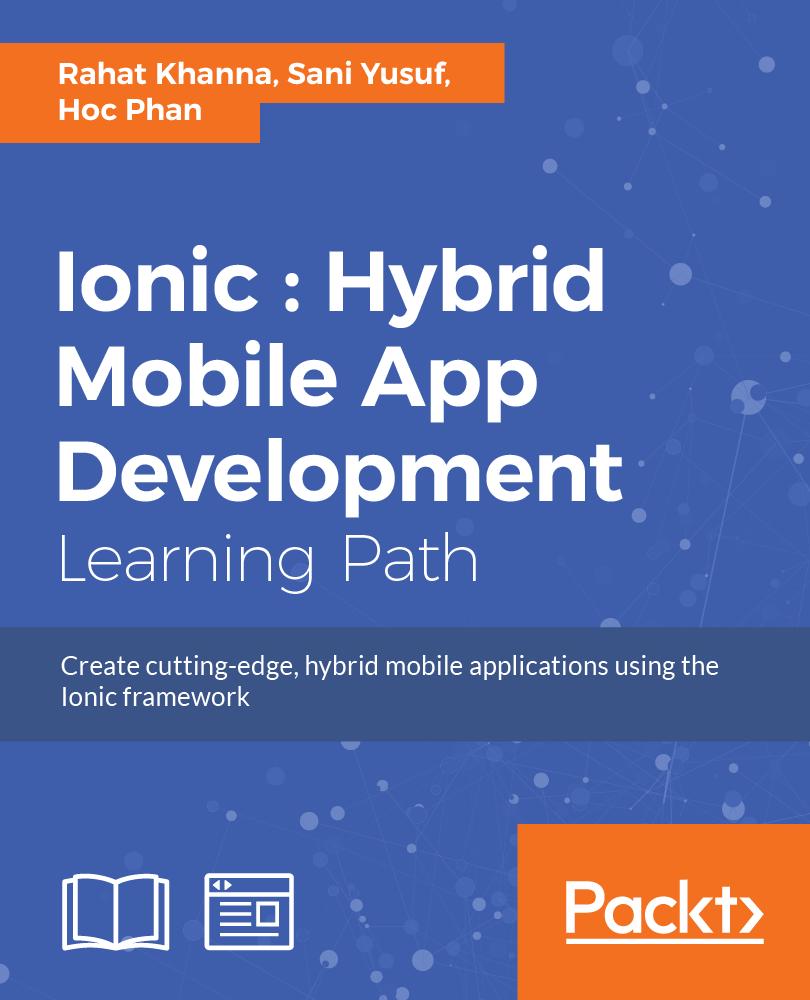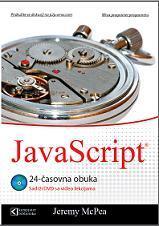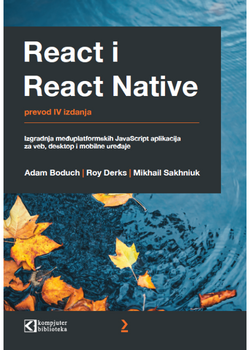
Autor: Rahat Khanna, Sani Yusuf, Hoc Phan
Broj strana: 544
ISBN broj: 9781788293112
Izdavač:
PACKT PUBLISHING ![]()
Godina izdanja: 2017.
 |
 |
 |
 |
 |
||||
Hybrid Apps are a promising choice in mobile app development to achieve cost-effectiveness and rapid development. Ionic has evolved as the most popular choice for Hybrid Mobile App development as it tends to match the native experience and provides robust components/tools to build apps. The Ionic Complete Developers course takes you on an end–to-end journey, empowering you to build real-time, scalable, and interactive mobile applications with the Ionic framework.
Starting with an introduction to the Ionic framework to get you up and running, you will gradually move on to setting up the environment, and work through the multiple options and features available in Ionic to build amazing hybrid mobile apps. You will learn how to use Cordova plugins to include native functionality in your hybrid apps.
You will work through three complete projects and build a basic to-do list app, a London tourist app, and a complete social media app. All three projects have been designed to help you learn Ionic at its very best. From setting up your project to developing on both the server side and front end, and best practices for testing and debugging your projects, you'll quickly be able to deliver high-performance mobile apps that look awesome.
You will then hone your skills with recipes for cross-platform development. Integrating Ionic with Cordova will bring you native device features, and you will learn about the best modules from its ecosystem. Creating components and customizing the theme will allow you to extend Ionic. You'll see how to build your app to deploy to all platforms to make you a confident start-to-finish mobile developer.
This Learning Path combines some of the best that Packt has to offer in one complete, curated package. It includes content from the following Packt products:
Rahat Khanna is a techno-nerd experienced in developing web and mobile apps for many international MNCs and start-ups. He has completed his Bachelors in Technology with Computer Science & Engineering as specialisation. During the past 7 years, he has worked for a multinational IT service company and ran his own entrepreneurial venture also in his early twenties. He has worked on ranging projects from static HTML websites to scalable web applications and engaging mobile apps. Along with his current job as a Senior UI developer at Flipkart, a billion dollar e-commerce firm, he now blogs on the latest technology frameworks on sites www.airpair.com, appsonmob.com, and so on and delivers talks at community events. He has been helping individual developers and startups in their Ionic projects to deliver amazing mobile apps.
Sani Yusuf is the founder of Haibrid, a company focused on creating innovative mobile solutions with hybrid technologies operating from London, England. Starting his career as a web developer, he moved on to native development of both desktop and mobile applications before developing a focus on hybrid mobile apps due to their philosophy of reusability and cross-platform operability.
When not managing his company, Sani spends his time public speaking, writing, and endlessly researching new educational and healthcare mobile solutions. Although a Nigerian by birth, Sani moved to the UK in 2010 to pursue a degree in computer science, having a great interest in healthcare and educational advancement with mobile technology.
Hoc Phan is a technologist with a wide range of experiences in frontend development, cloud computing, and big data. He started programming at the age of 12, with Pascal and Assembly, on the Intel 80286 computer. He learned to start practicing right away, even before figuring out the important concepts. Hoc worked on many JavaScript projects in the past by teaching himself the framework using various online sources. He was one of the first few developers who tested Ionic for its feasibility as a JavaScript replacement of the native language of a device. He wrote the Ionic Cookbook (for more information, visit https://www.amazon.com/Ionic-Cookbook-Hoc-Phan/dp/1785287974), which was very well received.
He has worked for both start-ups and large companies. By frequently speaking at local meetups as well as cloud computing/big data industry events and conferences, he learns from other experts. He holds an MBA degree from the University of Washington's Michael G. Foster School of Business.
• Dalibor Djordjevic
Ovo bi bilo lepo prevesti...
• Damir Demirovic
Obavezno da se prevede!
• Nataša Kunić
Super predlog! :)

Cena: 2200 rsd
Popust i do: 1430 rsd

Cena: 3190 rsd
Popust i do: 2074 rsd
© Sva prava pridržana, Kompjuter biblioteka, Beograd, Obalskih radnika 4a, Telefon: +381 11 252 0 272 |
||